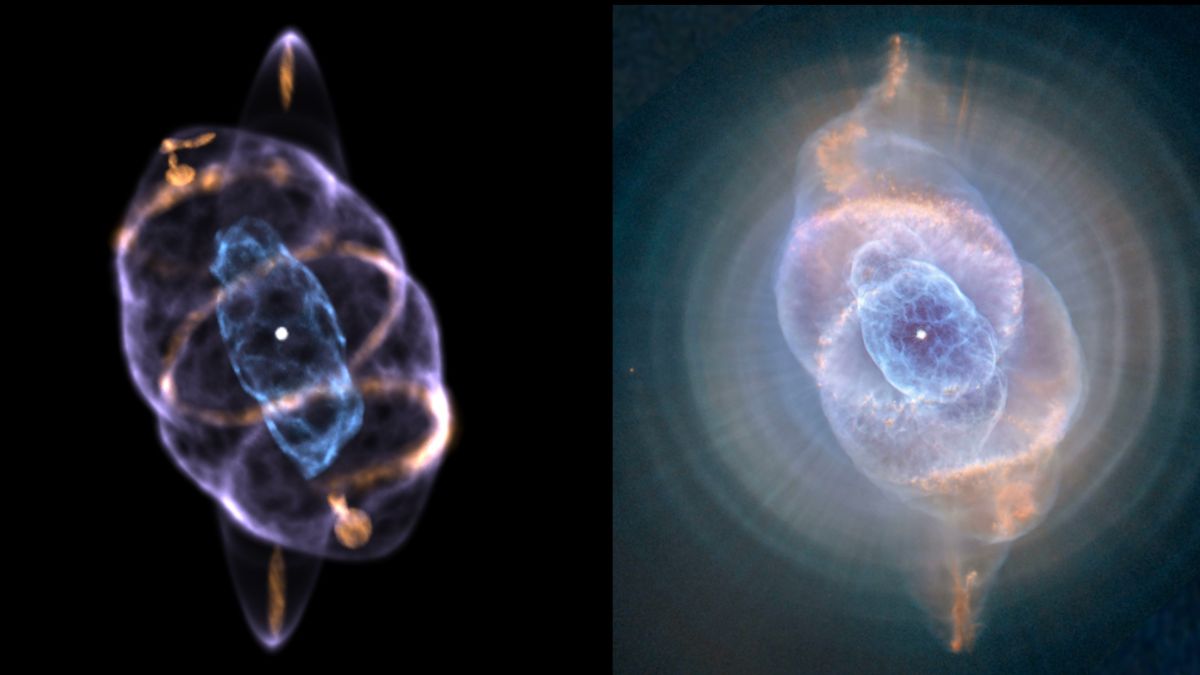Nothing passes gas quite like a dying star.
When a star roughly the size of the sun approaches the end of its life, it expels its outer layer of gas into a bright and beautiful bubble known as a planetary nebula. At the center of each bubble, a weakened star continues irradiating its surroundings, sculpting the gas into colorful shapes that astronomers have likened to crabs, reptiles and terrifying screaming faces.
One of the strangest and most baffling of these cosmic cloud paintings is the Cat’s Eye Nebula, located about 3,000 light-years from Earth. Seemingly made of several overlapping bubbles of blue gas with long, streamer-like filaments wrapped tightly around them, the nebula has defied clear explanation for centuries.
Now, new research published Sept. 15 in the journal Monthly Notices of the Royal Astronomical Society (opens in new tab) may finally offer an answer. Using data collected by the San Pedro Mártir National Observatory in Mexico showing the movements of different layers of gas in the nebula, astronomers created the first-ever 3D model of the Cat’s Eye Nebula.
Their computer-generated map reveals a pair of perfectly symmetrical rings swirling around the entire length of the nebula’s outer shell. According to the researchers, there’s only one possible cause of these rings’ symmetry: a double-barreled burst of energy known as a precessing jet.
Basically, as the nebula’s central star died, it released twin bursts of high-density gas in opposite directions at the same time, the study authors wrote. But rather than remaining fixed in place, the jets began to wobble (or precess) like a spinning top, leaving slowly looping rings of gas twirling above and below the star.
Jets like these are rare and exist only in binary star systems — that is, systems with two central stars orbiting each other, the authors wrote in the study. These jets provide strong evidence that the Cat’s Eye Nebula was once a binary star system that went out with a spectacular bang.
“Precessing jets in planetary nebulae are relatively rare, so it’s important to understand how they contribute to the shaping of more complex systems like the Cat’s Eye,” lead study author Ryan Clairmont, an undergraduate student at Stanford University, said in a statement (opens in new tab). “Ultimately, understanding how they form provides insight into the eventual fate of our Sun, which will itself one day become a planetary nebula.”
Originally published on Live Science.
































